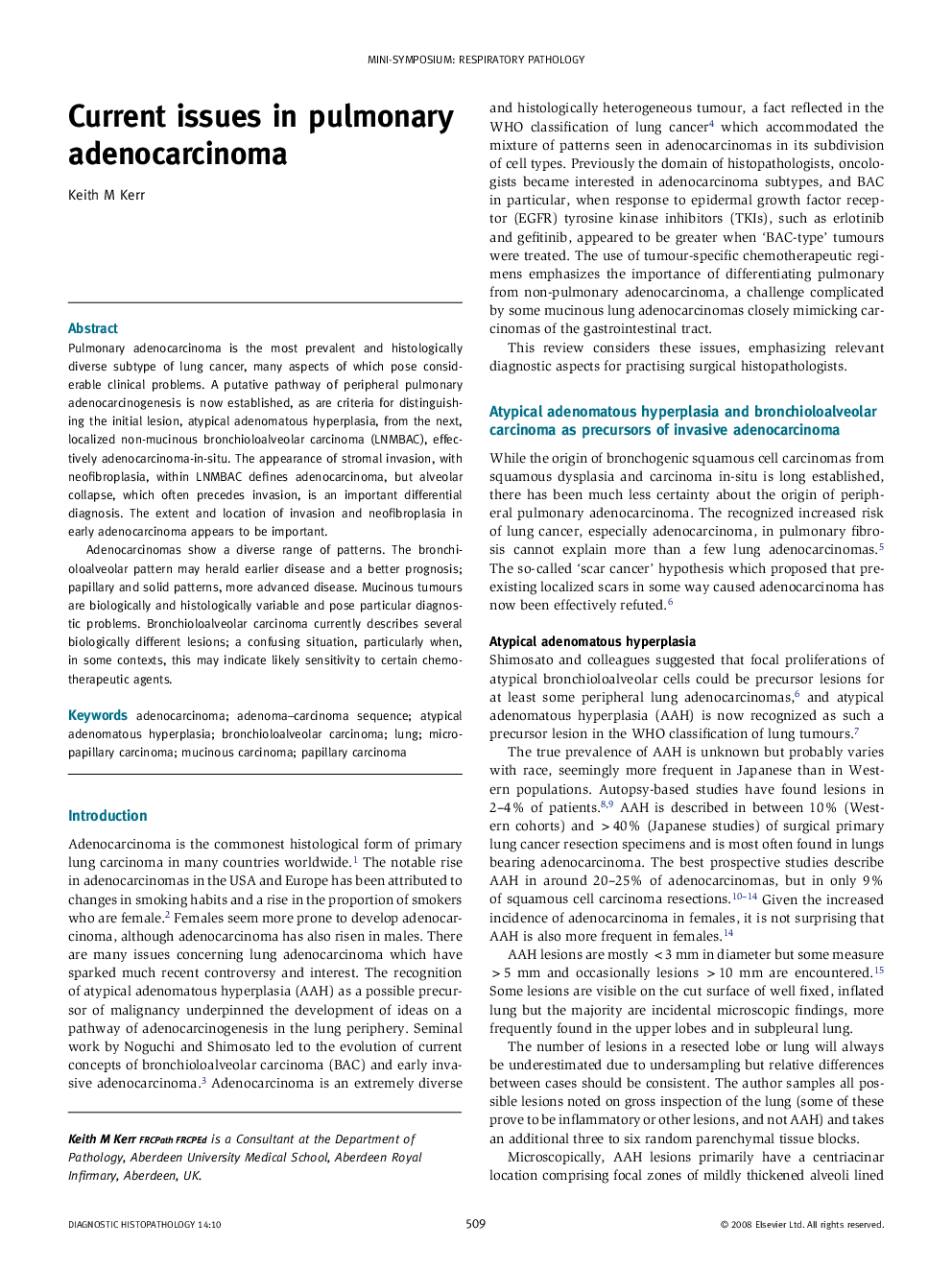| Article ID | Journal | Published Year | Pages | File Type |
|---|---|---|---|---|
| 4131538 | Diagnostic Histopathology | 2008 | 10 Pages |
Pulmonary adenocarcinoma is the most prevalent and histologically diverse subtype of lung cancer, many aspects of which pose considerable clinical problems. A putative pathway of peripheral pulmonary adenocarcinogenesis is now established, as are criteria for distinguishing the initial lesion, atypical adenomatous hyperplasia, from the next, localized non-mucinous bronchioloalveolar carcinoma (LNMBAC), effectively adenocarcinoma-in-situ. The appearance of stromal invasion, with neofibroplasia, within LNMBAC defines adenocarcinoma, but alveolar collapse, which often precedes invasion, is an important differential diagnosis. The extent and location of invasion and neofibroplasia in early adenocarcinoma appears to be important.Adenocarcinomas show a diverse range of patterns. The bronchioloalveolar pattern may herald earlier disease and a better prognosis; papillary and solid patterns, more advanced disease. Mucinous tumours are biologically and histologically variable and pose particular diagnostic problems. Bronchioloalveolar carcinoma currently describes several biologically different lesions; a confusing situation, particularly when, in some contexts, this may indicate likely sensitivity to certain chemotherapeutic agents.
